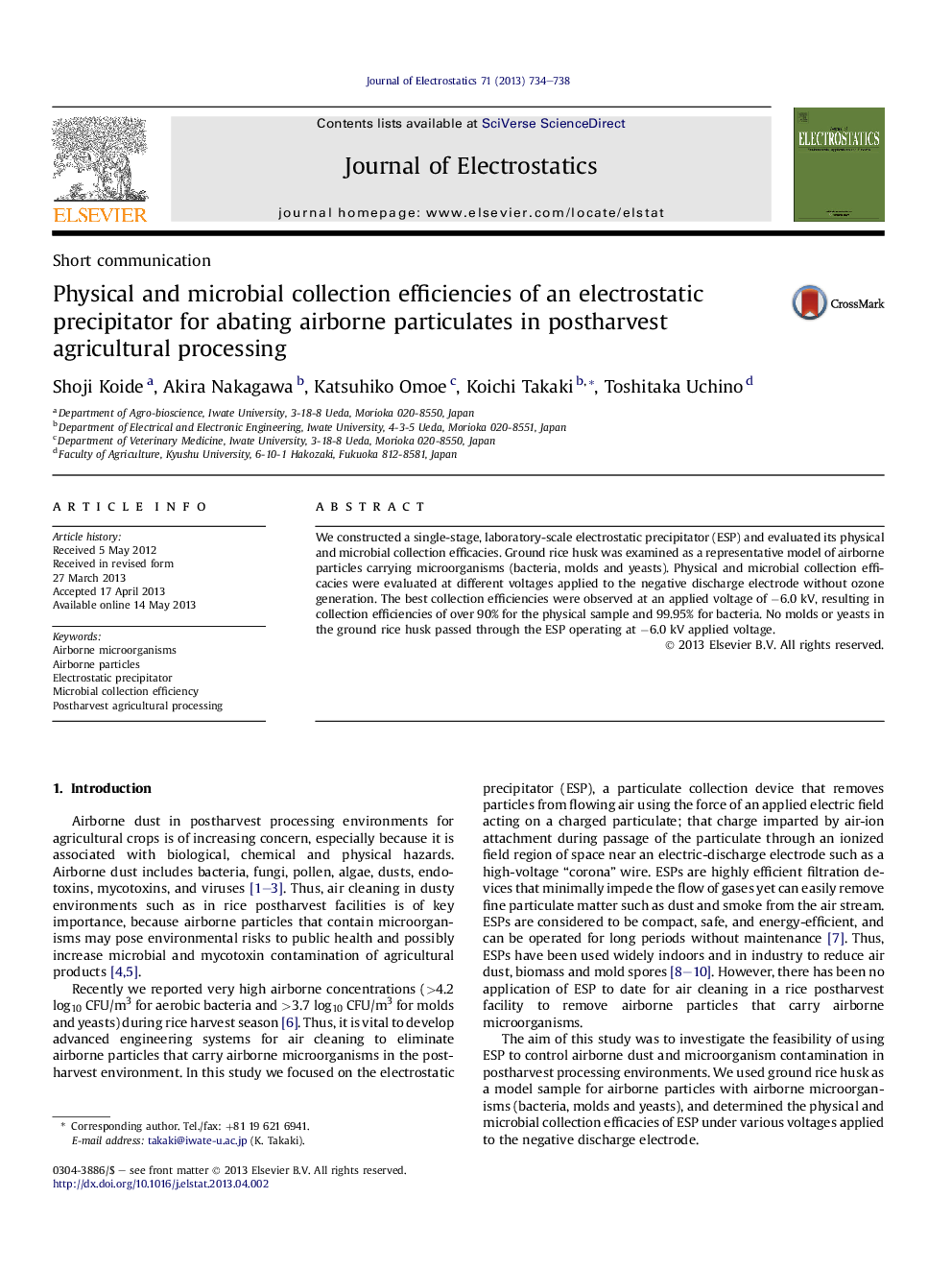| Article ID | Journal | Published Year | Pages | File Type |
|---|---|---|---|---|
| 10406738 | Journal of Electrostatics | 2013 | 5 Pages |
Abstract
We constructed a single-stage, laboratory-scale electrostatic precipitator (ESP) and evaluated its physical and microbial collection efficacies. Ground rice husk was examined as a representative model of airborne particles carrying microorganisms (bacteria, molds and yeasts). Physical and microbial collection efficacies were evaluated at different voltages applied to the negative discharge electrode without ozone generation. The best collection efficiencies were observed at an applied voltage of â6.0 kV, resulting in collection efficiencies of over 90% for the physical sample and 99.95% for bacteria. No molds or yeasts in the ground rice husk passed through the ESP operating at â6.0 kV applied voltage.
Related Topics
Physical Sciences and Engineering
Engineering
Electrical and Electronic Engineering
Authors
Shoji Koide, Akira Nakagawa, Katsuhiko Omoe, Koichi Takaki, Toshitaka Uchino,
